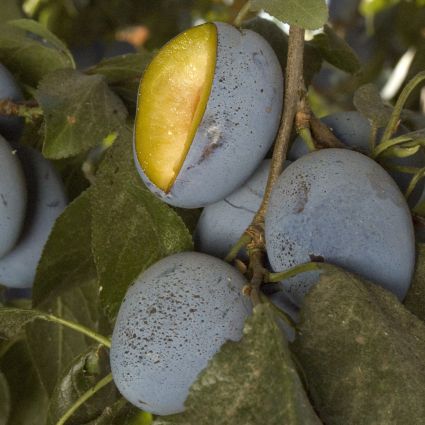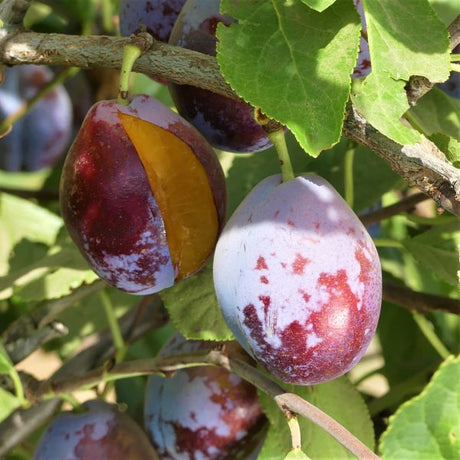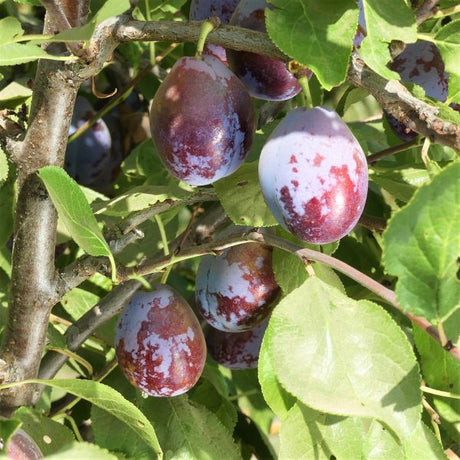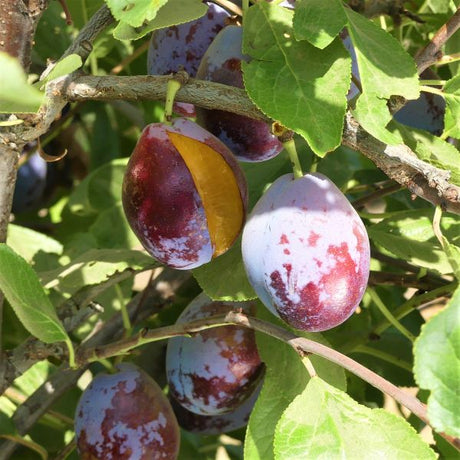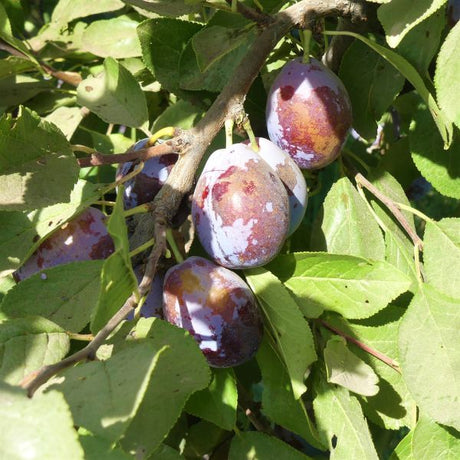-
Sold out
-
Sold out
-
Sold out
French Improved European Prune Tree
Prunus 'French Improved'
Regular price $14995Unit price /Unavailable
Prunes are European plum varieties with a high sugar content which is a trait that makes them suitable for sun-drying. Plums are native to China, America, and Europe. Today there are more than 200 cultivars being grown. There are two main types of plums, European and Japanese, being marketed today. Generally, Japanese plums are larger than European plums. European plums have high sugar content so they are often dried and used for making prunes. Japanese plums ripen earlier than European varieties.
Most European plums will either benefit from or require cross-pollination from another European variety. Prune trees are fast growing and usually begin producing fruit in 3 to 5 years after planting. Prunes are rich in dietary fiber that is effective in improving digestion. They are low in calories and contain ample amounts of vitamin C, calcium, potassium, and carbohydrates.
FAQ's for Buying Prune Trees Online
What is the difference between Prune trees and other Plum varieties?
What is the difference between Prune trees and other Plum varieties?
Prune trees are a type of European Plum known for their high sugar content, which allows the fruit to be dried naturally without fermenting. Unlike Japanese Plums that are typically larger and juicier, Prunes are firmer and sweeter, making them ideal for sun-drying and long storage. They are perfect for eating fresh, baking, or preserving.
Do Prune trees need a pollinator to produce fruit?
Do Prune trees need a pollinator to produce fruit?
Most European Prune trees benefit from or require a second European Plum variety for successful pollination and better fruit set. Planting compatible varieties in close proximity improves your harvest yield and fruit quality. Always check the specific tree’s pollination needs before planting to ensure a productive orchard.
How long does it take for a Prune tree to bear fruit?
How long does it take for a Prune tree to bear fruit?
Prune trees typically begin producing fruit within three to five years after planting. These fast-growing trees establish quickly in full sun and well-drained soil. With proper pruning and care, you’ll be enjoying homegrown Prunes in just a few seasons.
What are the health benefits of eating Prunes?
What are the health benefits of eating Prunes?
Prunes are a fiber-rich superfood known for supporting digestive health. They are low in calories and contain high levels of vitamin C, calcium, potassium, and complex carbohydrates. Regular consumption of Prunes may help with digestion, bone health, and energy levels, making them a nutrient-packed addition to your diet.
What growing conditions do Prune trees need?
What growing conditions do Prune trees need?
Prune trees thrive in full sun with fertile, well-drained soil. They prefer moderate climates and are well suited for USDA growing zones 5 through 9. Consistent watering, especially during fruit development, and annual pruning to encourage airflow and light penetration are key to growing healthy, high-yielding Prune trees.

